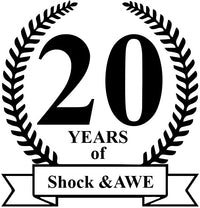XX:XX:XX
Continued from A1...
Artist Statement
With the peak of the Industrial Age the world began to look towards the future. This focus gave birth to the Modernist era and a vision of a utopian society. One in which humans and machines would reach a point in time to coexist within the world. As WWII ended, factories shifted from wartime production to consumer goods, and machine-made objects were elevated within the home. One of those objects, the Campbell’s soup can, achieved iconic status within American households and culture.
In 1961 artist Andy Warhol achieved the goal of the Modernist era when he released his Campbell's Soup Cans. He chose a mass manufactured item to hand paint and in doing so turned himself into the machine. Warhol left various brush strokes and some minor imperfections that were only visible upon closer inspection. Otherwise, from a distance they appear identical. He turned the machine-made can from a psychical object into a pictographic abstraction of the object. He removed the physical object and replaced it with a painting that trigged nostalgia for the viewer. This informs the way in which we consume media beginning with the television in the 1950s.
The modernist era was replaced with postmodernism, typographic labels were replaced with logographic, radio was replaced by television, and television was replaced by the internet. Physical real world moments deconstructed and removed from their forms: smells, emotions, sounds, time and space. Broken down into segments ranging from 3 second gifs to episodic miniseries ready to be consumed at our leisure to trigger nostalgia, anxiety, depression, isolation and sometimes a little bit of hope. It raises the question, has media become the machine of the post-modern era? Stripping tragedy, joy, hope and value from all aspects of life until it all fits inside one object that you hold in your hand. From “Just heat and serve” to "scrolling the feed"
On January, 6th, 2021 I watched a group of terrorist storm the United States Capital building. I was able to talk, text, watch and read about this moment in real time with people spread out across the globe. We sat alone, miles between us, but we experienced this moment together with each of us giving our reactions. I began to wonder when these type of “world collective” moment(s) began to occur. Since news was invented we have had localized Shock & Awe, but when did these become world wide moments? This question lead me to meditate on what 9/11 truly signified to America and the world. Was 9/11 only a terrorist attack against the physical buildings and institutions of America or did it serve a dual purpose to attack our psychological frame of mind? The attacks broadcasted live, replayed and reproduced across all media channels and stripped of their forms: smells, emotions, sounds, time and space. Forever preserved and available for consumption in abstract format which would leave Americans and the world suspended in a state of nostalgia similar to what Warhol’s soup cans did for a previous generation.
If the Machine Age gave birth to the Modernist utopia, a world where machines and humans become one and live in perfect harmony. Warhol’s soup cans embody the idea, a machine made object followed by a human produced piece of art about that object, Pop Art. Then the Systems Age gave birth to the postmodern dystopia, a world where humans and systems have merged. Humans have been reduced into binary thinkers walking around directly plugged into the media machine. We lug through our days desperately eyeing every physical object and human interaction that we can reduce into banal content to be posted to our feed, Post-Pop Art. As we stare into these screens that stay firmly planted in our palms waiting for an alert. We ready our fingers to fire off the hottest takes, gif, emoji, or look around for the right background to shoot a video, find the perfect light and open up that forward facing camera to look right at ourselves and say, “hey guys!"
Epilogue
Einsteins theory of relativity is E=MC2, energy equals Mass multiplied by time squared. In the digital world, nothing has a psychical mass and everything moves at the speed of light. If there is no Mass to begin with then there is no Energy. If Energy and Mass are both values of 0, then the problem presented is: 0=0(speed of light)2. Which is equal to zero, a world of emptiness and no meaning. Is there any relativity in the post-modern digital world that we’ve constructed? If not, how do we start at ground zero? If there is no relativity in the digital world, how does that affect our minds and how we process these events that we experience within the digital world? How do we start to perceive the physical world when time spent within the digital world takes over time spent in The Real World? Is the digital world a place where humanity, reality, time, history and meaning are lost? Is it one long self-produced and never ending Don Draper-like free fall until we finally hit rock bottom? Or have we hit it already and it’s time for us to open our eyes on that cliff in Big Sur to gain a new enlightenment?
